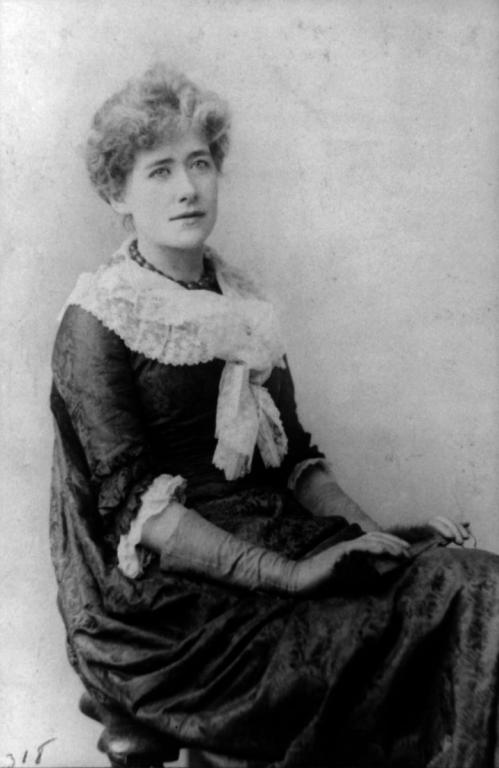Ellen Terry
215 King's Rd, Chelsea, London SW3 5EH, UK

Ellen Terry was born Alice Ellen Terry on February 27th, 1847 in Coventry. Her parents, Benjamin and Sarah Terry, were both English actors. She was one of eleven children born into the family, but two died in their infancy. Terry never attended school and began her career as an actor in 1856 at the Princess theatre in London. Her sister Kate, who was a quote popular local actress, also worked at this theatre and Terry stayed there until 1859. After this time she, along with Kate and their parents began traveling the country as actors until their return to London in 1861. In 1862 she moved to Bristol, she began at J. H. Chute’s stock company where she was cast for a burlesque role. Terry explained that she could not sing or dance but eventually grew to love burlesque just as much as she loved Shakespeare. During her time in Bristol Terry met artist George Frederick Watts when she posed for his painting “The Sisters” with Kate. They married in 1864 with a nearly thirty year age difference.
She had returned to London in 1863, to pursue more roles and around this time she was photographed by Lewis Carroll, who would publish Alice in Wonderland two years later. The marriage did not last very long, and eventually she was made to return to her parents. At the age of 21 she became associated with Edward William Godwin and this relationship estranged her from her family, especially her mother, who refused to see her again until she married again. Terry produced two children with Godwin, Edith and Edward. Both children adopted the last name Craig after their birth. Godwin had spent too much money producing their home and when bailiffs came to their home, he abandoned the family. From this moment on, Terry began supporting her family as a single mother by returning to the stage.
Soon after she was granted a divorce from her husband, George Frederick Watts, in 1877, she married Charles Kelly, who left her two years later for another woman. She became a lead at the Lyceum theatre, opposite of Sir Henry Irving. This marked the start of the golden age of her career, where she quickly became one the most prominent actresses of the nineteenth century. Michael Holroyd claims that simply performing with or casting Terry in a production would enhance one’s credibility (Bloodworth 50). The last production she performed with Irving was in July 1903, playing her one of her most famous roles as Portia in Merchant of Venice. Irving died two years later and Ellen was so devastated by the death of her close friend that she considered ending her career as an actor. She did return to the stage, however, in 1906 at the Court Theatre. At this point her career as an actor had spanned fifty years since her first performance at the Princess theatre.
During a tour of America, Terry married American actor James Carew on March 22nd, 1907. She was almost thirty years older than Carew, who was younger than both of Terry’s children. Edith did not approve of the marriage between Terry and Carew and went so far as to build a hedge between their homes to avoid seeing him. The marriage ended two years later but appeared together on stage after they have seperated.
She began international tours on her lectures on Shakespeare in 1910, a important piece of literature to the suffragist movement that was published posthumously. Once, she gave her first lecture, she became a front page features in many daily London publications.
In 1922 Terry received an honorary degree from the University of St. Andrews and in 1925 she was made a Dame, Grand Cross, of the Order of the British Empire. Ellen suffered a stroke on July 17th, 1928 and died on July 21st, 1928. A ceremony was held three days later at Smallhythe church. Terry remains one of the most loved and most prominent Shakespearean actresses to emerge from England. Her career spanned sixty-four years and during that time she became the centre of Victorian culture and key political moments of the nineteenth century like the suffragist movement. As Katherine E. Kelley Claims in her essay on the after-voice of Terry, her history and voice served to “create a bridge to the future for herself and her daughter’s generation of women”.
Parent Map
Coordinates
Longitude: -0.170536600000
